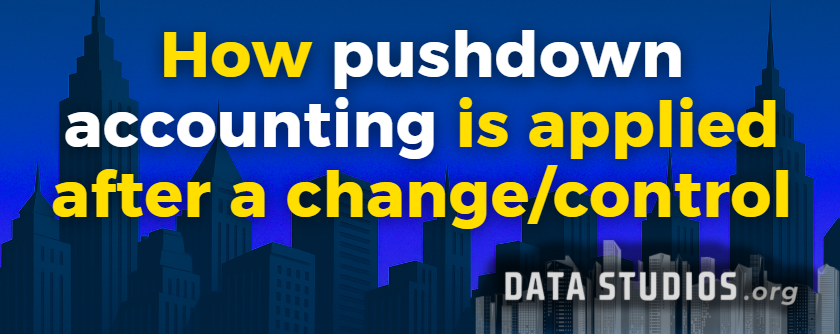Contract Costs in Revenue Recognition: Incremental Costs and Fulfillment Costs
- Graziano Stefanelli
- Apr 29
- 4 min read

In the context of revenue recognition under ASC 606, contract costs are crucial for determining the true cost of obtaining and fulfilling contracts with customers.
These costs directly impact profitability and financial reporting.
This article explains the types of contract costs, specifically incremental costs and fulfillment costs, and outlines how these should be recognized, measured, and disclosed under U.S. GAAP (ASC 340).
1. What Are Contract Costs?
Contract costs refer to the costs incurred to obtain or fulfill a contract with a customer. They include:
✦ Incremental costs — costs that would not have been incurred if the contract had not been obtained.
✦ Fulfillment costs — costs incurred to satisfy performance obligations within a contract.
These costs are capitalized or expensed depending on whether they meet specific criteria under ASC 340.
2. Incremental Costs of Obtaining a Contract
Incremental costs of obtaining a contract are costs directly associated with securing a contract with a customer. These are costs that would not have been incurred if the contract had not been obtained.
Recognition and Capitalization
Under ASC 340-40, a company must capitalize incremental costs of obtaining a contract if:
✦ They are directly attributable to obtaining the contract
✦ They are expected to be recovered through the contract
Common examples of incremental costs include:
✦ Sales commissions or brokerage fees directly tied to securing a contract
✦ Legal fees directly associated with negotiating the contract
✦ Marketing expenses directly related to winning the contract
Example – Incremental Cost of Obtaining a Contract:
A company incurs a sales commission of $10,000 for securing a $500,000 contract.
Journal Entry:
Debit: Contract Costs – Incremental Costs – $10,000
Credit: Cash (or Accrued Expenses) – $10,000
Amortization of Capitalized Incremental Costs
Once capitalized, these costs should be amortized over the contract’s term, based on the pattern in which the contract revenue is recognized.
If the contract is short-term, the costs can be amortized over the life of the contract. For longer-term contracts, amortization is typically done on a systematic basis.
Example – Amortizing Incremental Costs:
Suppose the contract spans 5 years, and the company capitalized $10,000 in commission costs.
Amortization per year = $10,000 ÷ 5 = $2,000 per year.
Journal Entry for Amortization:
Debit: Amortization Expense – $2,000
Credit: Contract Costs – Incremental Costs – $2,000
3. Fulfillment Costs
Fulfillment costs are costs incurred to fulfill a contract and satisfy performance obligations. These are costs directly associated with the delivery of goods or services to the customer.
Recognition and Capitalization
Under ASC 340-40, fulfillment costs should be capitalized if they:
✦ Are incurred in the process of satisfying a performance obligation
✦ Are expected to be recoverable from the customer
These costs are typically expensed as incurred unless they meet the criteria to be capitalized, such as:
✦ Direct labor or materials used in providing the goods/services
✦ Out-of-pocket expenses like delivery or packaging costs
✦ Costs to set up or install the product (e.g., for construction or manufacturing)
Example – Fulfillment Costs:
A company incurs $5,000 in direct labor costs to fulfill a contract for custom-built machinery.
Journal Entry:
Debit: Contract Costs – Fulfillment Costs – $5,000
Credit: Cash or Accrued Expenses – $5,000
4. Capitalization Criteria for Fulfillment Costs
Under ASC 340, a company must capitalize fulfillment costs if the following criteria are met:
✦ The costs relate directly to a specific contract
✦ The costs generate or enhance resources used to fulfill the contract
✦ The costs are expected to be recoverable from future revenue generated by the contract
5. Amortization of Fulfillment Costs
Similar to incremental costs, capitalized fulfillment costs must be amortized over the period in which the company expects to receive economic benefits from the contract.
If the fulfillment costs relate to a contract with a single performance obligation, the costs are typically amortized over the life of the contract, generally matching the pattern of revenue recognition.
Example – Amortizing Fulfillment Costs:
If fulfillment costs of $5,000 are capitalized for a 5-year service contract:
Amortization per year = $5,000 ÷ 5 = $1,000 per year.
Journal Entry for Amortization:
Debit: Amortization Expense – $1,000
Credit: Contract Costs – Fulfillment Costs – $1,000
6. IFRS Treatment of Contract Costs (IFRS 15)
Under IFRS 15, the treatment of contract costs is very similar to ASC 340, with some key points:
✦ Incremental costs of obtaining a contract should be capitalized, unless the amortization period is one year or less (in which case they should be expensed as incurred).
✦ Fulfillment costs should be capitalized if they relate directly to the contract and are recoverable.
7. Financial Statement Presentation
✦ Balance Sheet: Incremental costs and fulfillment costs that are capitalized are presented as noncurrent assets (unless the contract is short-term, in which case they are current assets).
✦ Income Statement: Amortization of incremental costs and fulfillment costs is recorded as an expense under operating expenses.
✦ Cash Flow Statement: Capitalized costs appear in investing activities (if part of a larger project) or operating activities (if directly tied to contract fulfillment).
8. Disclosure Requirements
Both U.S. GAAP and IFRS require companies to disclose:
✦ The nature and amount of capitalized contract costs
✦ Amortization schedules and any changes in estimates
✦ How these costs are expected to be recovered from the contract’s future revenue
These disclosures help provide insight into the company’s investment in contracts and the timing of cost recovery.




